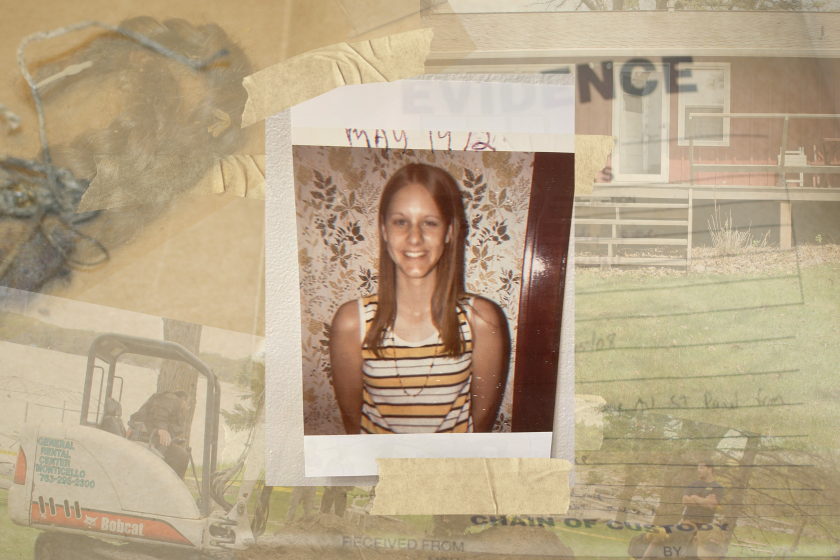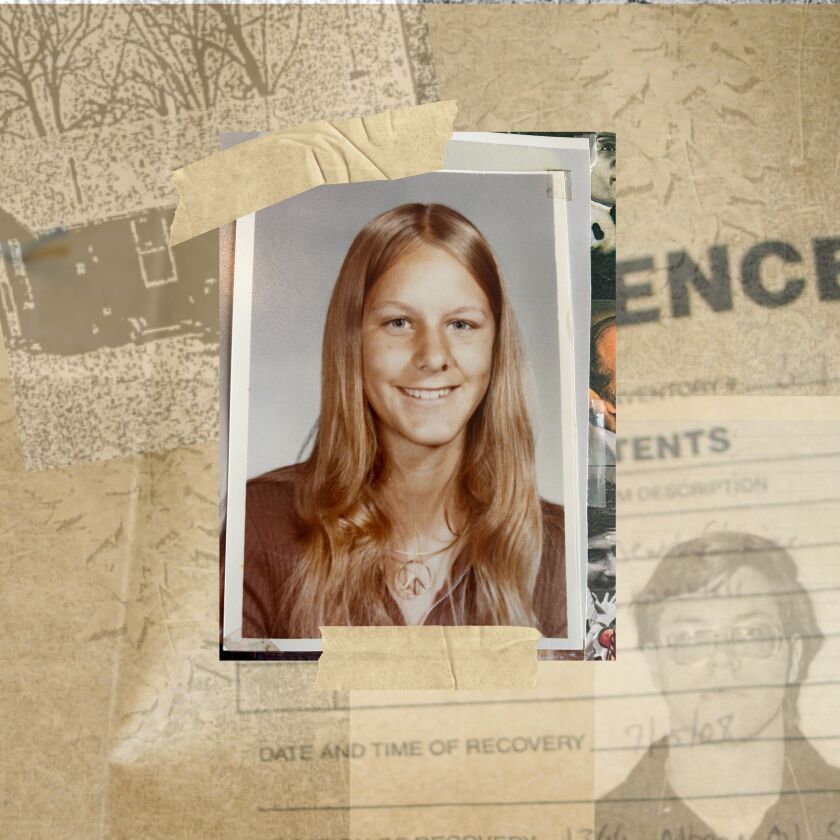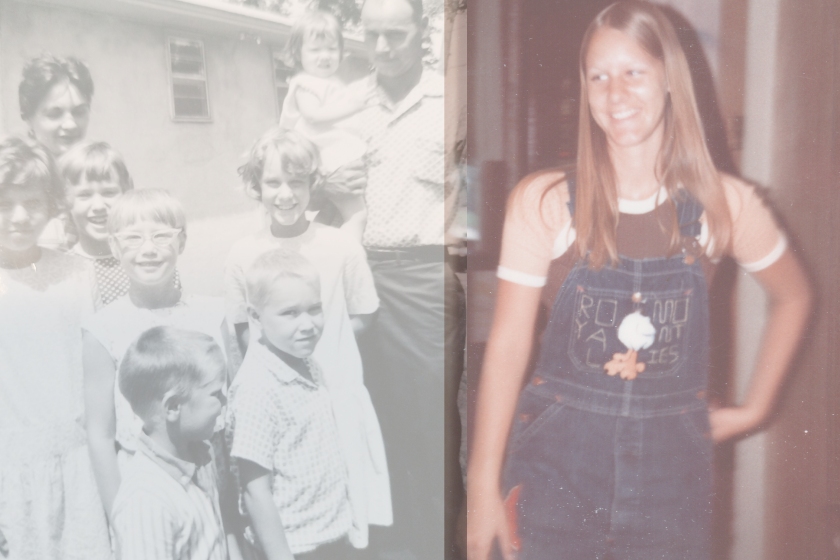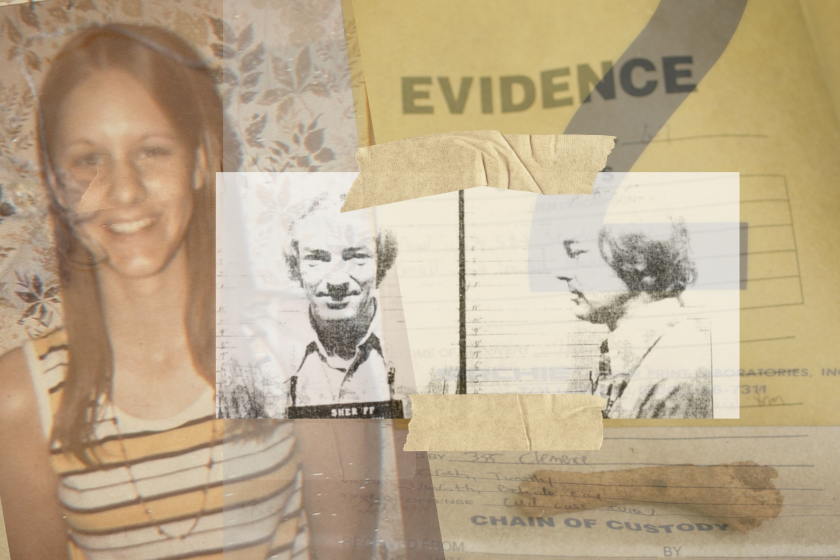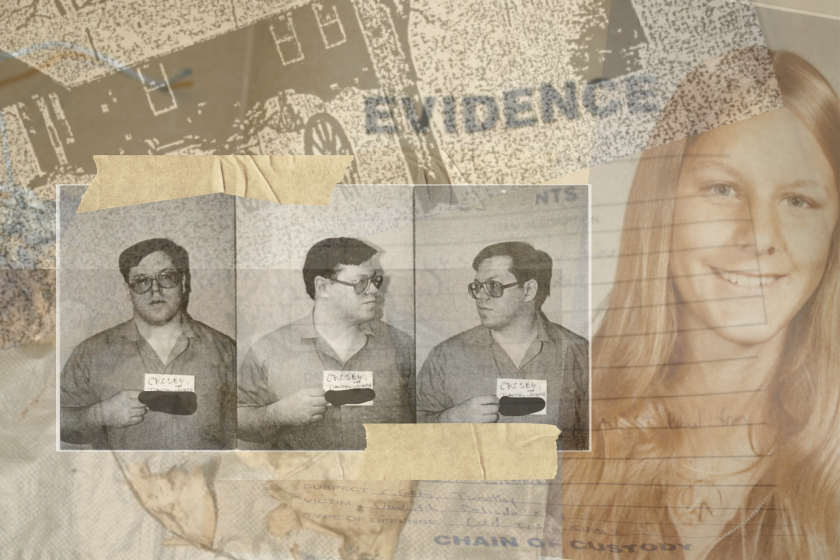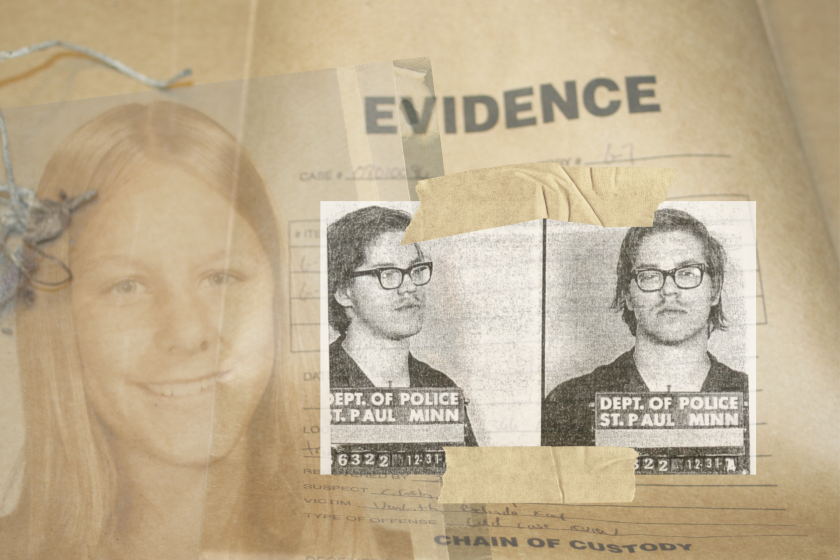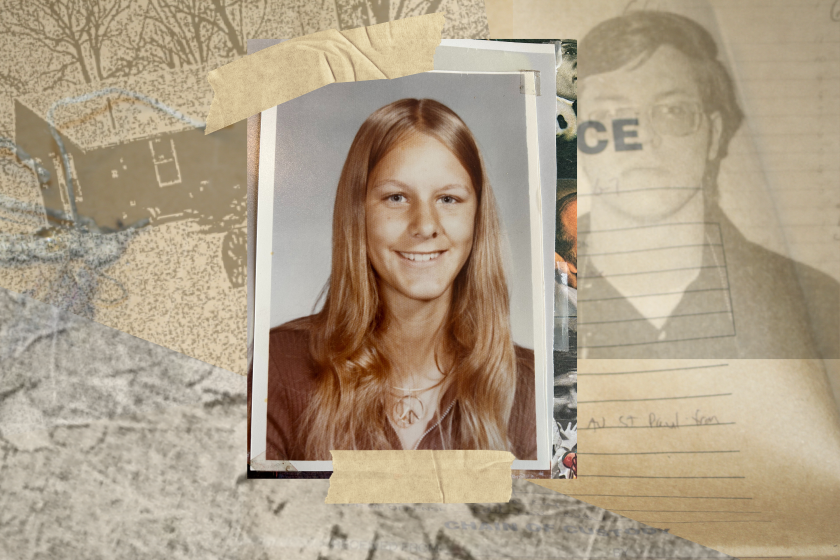Editor’s note: This is Part 5 in a Forum News Service investigative series related to the disappearance of Belinda Van Lith, including an exclusive interview with the main suspect in her case. To see everything published in the investigation, visit the Van Lith investigation page. Listen to The Vault podcast for related episodes.
EAGLE LAKE, Minn. — The Wright County Sheriff’s Office quest to investigate Timothy Crosby for the disappearance of Belinda Van Lith led to his arrest — but not for the crime they set out to uncover.
ADVERTISEMENT
The investigation into Crosby as a suspect in Belinda’s disappearance was intensified in 2008 during a cold-case review, conducted in coordination with the Minnesota Bureau of Criminal Apprehension.
Belinda went missing on June 15, 1974, from a home she was house-sitting on Eagle Lake, located outside of Monticello.
In coordination with Belinda’s family, Forum News Service obtained the roughly 1,200-page law enforcement case file related to her investigation by the Wright County Sheriff’s Office. The file reveals a stalled investigation that picked up steam in 2008 and was aimed at one man: Timothy Crosby, Belinda’s one-time neighbor.
The file also included a detailed account of Crosby’s crimes, which includes a history of sexual assault and three cases in which kidnapping victims escaped from him.
The renewed investigation into Belinda’s case, which began in 2008, included a re-examination of Crosby’s former Eagle Lake cabin, where he was staying alone the weekend she went missing. The cabin was located 100 yards from where Belinda was staying, and Crosby was the last known person to see her.

In addition to another look at the Cornwell residence, where Belinda had been house-sitting when she vanished, investigators honed in on the field where Crosby had gotten his vehicle stuck on the evening of Belinda’s disappearance.
Crosby’s DNA was collected in 2009 when investigators executed a search warrant at his St. Paul home.
ADVERTISEMENT
The details of the search warrant application were obtained by a local media outlet which reported that Crosby was a suspect in Belinda’s disappearance — and the murder and dismemberment of Martha Ann Bacon, whose remains were discovered in 1993 near Eagle Lake.
The story caught the attention of a woman who reached out to investigators and told them that Crosby had paid her 17-year-old daughter to perform sexual acts.
Crosby was convicted in December 2009 on a charge of soliciting a minor for sexual acts.

While Crosby served his sentence, investigators continued their investigation into him. They unleashed cadaver dogs, excavated properties, submitted weapons for DNA analysis and executed a full-scale search warrant on his St. Paul home.
Items uncovered in his home were critical to the state’s successful argument that Crosby was a danger to the public. He was civilly committed in 2013 to the Minnesota Sex Offender Treatment Program facility in Moose Lake, where he is being held indefinitely as a dangerous sexual recidivist.
Crosby has not been charged in relation to Belinda’s disappearance.
'Garbage pulls,' surveillance and neighbors
In May 2008, Officer Dave Clemence and now Lt. Mike Lindquist with the Wright County Sheriff’s Office began searching through the curbside garbage bin at Crosby’s St. Paul home, where they discovered a long, brown braid of hair “that appeared to have been cut off a person,” according to the report.
ADVERTISEMENT
Lindquist recently told Forum News Service that BCA testing revealed the hair was synthetic.

Two months later, in July 2008, another garbage pull revealed a pink and black bra that had been cut between the cups. Crosby had previously cut the bra of a woman he kidnapped and sexually assaulted. The cut was in the same location.
Wright County investigators began surveilling Crosby in 2009. They followed him as he went to and from work. Then, they installed a GPS tracking device on his truck. Crosby rotated vehicles, though. When investigators discovered he also drove a blue Hyundai, they applied — and were granted — a warrant to install another.

Investigators also spoke with Crosby’s neighbor, who told them about some odd behavior. Crosby covered his basement windows with newspapers.
The neighbor also noticed something that stood out to investigators: He regularly observed Crosby “messing around” with the door handles of the blue Hyundai, according to the report.
Two of Crosby’s former victims reported the passenger-side door handles didn’t work from the inside. They had been cut off. This had also been reported by a woman whose cabin was adjacent to the Crosby cabin.
Her two daughters confirmed that with investigators in 2008 and 2009.
ADVERTISEMENT
Searching the Crosby cabin
Investigators discussed searching the Crosby cabin when they reopened the case in 2008. The new owner agreed to allow investigators to conduct a thorough search.
“This cabin was the scene of a kidnapping and rape incident in December of 1974,” Lindquist wrote in a 2009 report. “It is believed that evidence from other crimes may still be present at this cabin.”
The FBI assisted Wright County Sheriff’s Office on June 15, 2009 — the 35th anniversary of Belinda’s disappearance — on an indoor search of the Crosby cabin and shed.

The FBI’s Evidence Response Team swept the main floor and basement of the cabin, along with a shed on the property. Three items of interest were taken into evidence, including a sickle, a green metal angle iron and a piece of wood with screws, all of which were left behind by the Crosbys.
Investigators submitted the items to the BCA for DNA analysis, with the intention of cross-referencing any DNA extracted from the items with Belinda’s DNA profile, which was created through saliva samples from her family members.
Investigators also hoped to cross-reference DNA from the items with the DNA profile of Martha Bacon, whose dismembered remains were discovered in Wright County in 1993. Her murder remained unsolved.
By August, the BCA notified investigators that blood had been detected on all three submitted items. Two months later, the results of the DNA analysis came in.
ADVERTISEMENT
DNA was not obtained through the blood samples, according to BCA Forensic Scientist Joe Cooksley’s report.
In a recent interview with Forum News Service, Cooksley explained possible reasons for the results. The sample derived from the three items included very small blood samples. While he could not definitively say, the lack of DNA extracted from the blood sample could have meant it did not belong to a human.
“Sometimes it’s possible with very small blood stains that you would get a limited amount of DNA. Typically, you’d expect to see some amount of DNA,” Cooksley said. “For these particular samples, what we do is we extract DNA from the sample and then we’ll do a process called quantification, where we’d determine how much DNA was obtained from the extracted DNA. For all of these samples, the value was zero.”
The samples also endured decades of harsh environmental factors while stored in the shed, including hot summers and cold winters. There have been instances in which the BCA was able to retrieve DNA samples from decades-old blood that has been subjected to harsh environmental factors, Cooksley said. There have also been times when those factors did damage the sample, though.
As far as advancements in DNA technology, Cooksley said it wouldn’t necessarily change the outcome in this particular case, mainly because of the very small size of the sample.
The blow to investigators didn’t halt their investigation — it expanded the scope.
Digging for evidence
Through 2013, Lindquist continued to pursue Crosby as a suspect in Belinda’s case — in conjunction with the two sex workers whose remains were discovered in the 1990s near Eagle Lake — and arrangements were made to include the FBI’s certified cadaver dogs as part of the investigation.
ADVERTISEMENT
The search included two canines.
The first dog alerted officials while searching the southwest exterior side of the cabin, which faces the shores of Eagle Lake. Investigators then led the dog into the basement, where it honed in on the interior portion of the southwest side of the cabin.
The next step involved FBI agents taking a core dirt sample from the ground near the area where the dog picked up the scent of human remains. That sample was placed in an area away from the cabin. This time, the second dog was brought in — and that dog honed in on the sample, placed by the FBI, in the area away from the cabin.
Investigators were hopeful that an excavation of the outdoor area of the southwest portion of the cabin would reveal evidence of a crime.
“Experts do not understand what part of human decomposition odor a dog can identify,” Lindquist wrote in his search warrant application. “However, practical criminal investigative experience, training records, proficiency assessments, annual certification assessments and case law all support the ability of the property trained Victim Recovery Dog to be able to scent discriminate and identify the odor of human decomposition.”
In June of 2014, Wright County investigators, in conjunction with the BCA, excavated the area under the deck of the former Crosby cabin, located near the shorefront on the southwest side of the cabin.
A backhoe was used to scrape the area under the deck layer by layer until it reached a depth of 3 1/2 feet. The search didn’t uncover any human remains.
Ground-penetrating radar was also used to scan the inside of the basement to determine if remains could have been buried beneath the basement floor.
“The technician was unable to locate any disturbances in the soil beneath the cement floor,” Lindquist wrote in the report.
Searching the field
Another part of the puzzle: the manure pit where Crosby had gotten stuck on June 15, 1974 — the day Belinda disappeared.
Lindquist was joined by Detective Jason Hermansen on May 20, 2009, when they visited the new owners of the land.
The parcels of land had been split up and sold separately following the 1988 and 1989 deaths of the two brothers who lived on and owned the property, which included 230 acres of farmland, a homestead, a barn and other outbuildings.

A few days after their first visit, Lindquist and Hermansen returned to the area. This time, they were able to locate the spot where the manure pile had been, since grown over with high weeds and grass.
That area borders a wooded area, and investigators noted in their report that it could be a “prime location to hide a body.” While looking around, they found two bones and took them into evidence. They were later determined to be animal bones.
Investigators tracked down the nephew of the land’s previous owner, who was around in June 1974. He recalled his uncle talking about the young man who had gotten stuck in the manure pile.
The nephew told investigators his uncle was working in the barn in the early hours of the morning when Crosby entered, covered “head to toe” in manure. That fall, the nephew was present while his uncle went through the manure pile, looking for signs of Belinda. During that dig, he was startled when his uncle uncovered a chicken wing — he thought, at first, that it was a body part.
Five years passed before cadaver dogs were taken out to the field.
The FBI joined Wright County Sheriff’s Office investigators in spring 2014 to thoroughly search that field, particularly the area on and near where the manure pit had been located.
Cadaver dogs trained to identify clandestine graves were unleashed in the field and bordering wooded area. They didn’t find anything.
A search warrant for Crosby’s DNA
Investigators with the St. Paul Police Department, in coordination with the Wright County Sheriff’s Office, executed a search warrant at Crosby’s St. Paul home in June of 2009.
They were there to collect his DNA for the Belinda and Bacon cases.
The St. Paul Pioneer Press picked up the story, and published an article with the headline, “Two cold cases, a single suspect.” The story unveiled the nature of the search warrant and informed the public that Crosby was a suspect in at least two cases: the disappearance of Belinda and the dismemberment of Bacon.

That story caught the attention of a woman who recognized Crosby’s name. Her 17-year-old daughter had been hired by Crosby to conduct odd jobs around his house — and had been paid to perform sexual acts in his presence.
The 17-year-old was interviewed by investigators, and she had a lot to say.
Survivor's report leads to arrest
The girl had met Crosby through his wife’s family members. Not too long after they were introduced, he hired her to do yard work and cleaning projects. Crosby paid her generously at first, which made her more inclined to keep coming back.
Crosby eventually began loaning the 17-year-old money to support her methamphetamine habit. In return, he’d keep her busy around his house, working alongside her.
He also spent time driving with the girl around St. Paul, talking. While together, he’d regularly park his car at the back of a nearby cemetery. On one occasion, she told investigators he said, “Do you know how lucky you are that I can control myself now?”
On at least one other occasion, she said he told her, “I don’t want to hurt you.”
It didn’t take long for Crosby to begin offering her money to undress and perform sexual acts in his presence. On one occasion, Crosby picked up another woman while driving with the 17-year-old. He took them to a motel in St. Paul.
The 17-year-old told investigators she felt Crosby planned this. When they arrived, he didn’t need to check in — he already had the key. The 17-year-old locked herself in the motel bathroom while Crosby paid the other woman to perform sexual acts.
The girl noted to investigators that Crosby acted differently toward the other woman. He was mean and aggressive, which was a side of him she had not previously seen.
Months later, Crosby offered to give the 17-year-old girl money to engage in sexual acts with another woman in his presence. He took them both to the same motel.
Based on the girl’s testimony, Crosby was arrested on Sept. 4, 2009, and charged with using a minor in a sexual performance, solicitation of a minor to practice prostitution and hiring a minor to engage in prostitution.
A secret locked basement room
Crosby pleaded guilty to using a minor in a sexual performance. On Dec. 28, 2009, he was given a 24-month stayed sentence, with the stipulation that he undergo sex offender treatment, according to court documents related to his appeal. Crosby did not participate in sex offender treatment, which was a violation of his agreement with the court.
Crosby was granted probation in May 2011, but was promptly detained while the state of Minnesota prepared its case for his civil commitment as a sexually dangerous person. A search warrant executed on his St. Paul home following the 2009 charges was critical in this case.
The search was conducted by the St. Paul Police Department, in coordination with the FBI, BCA and Wright County Sheriff’s Office.
This time, they had full access to the interior and exterior of the home — including a secret, locked basement room.
The items discovered in that basement played a pivotal role in the state of Minnesota’s arguments in support of the indeterminate civil commitment of Crosby in 2013.
Editor's note: This is part 5 of Forum News Service's ongoing investigation into the Belinda Van Lith missing persons case. Follow The Vault for updates. If you have information in this case, please contact Mike Lindquist with Wright County Sheriff's Office at 763-682-1162.

